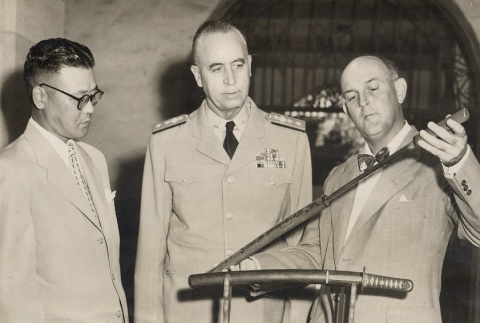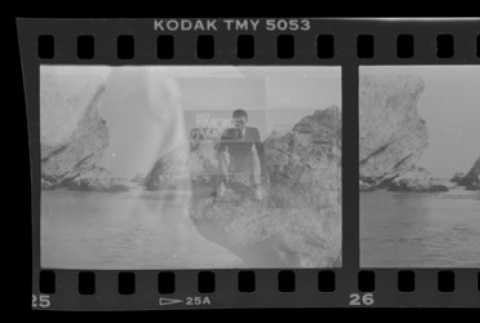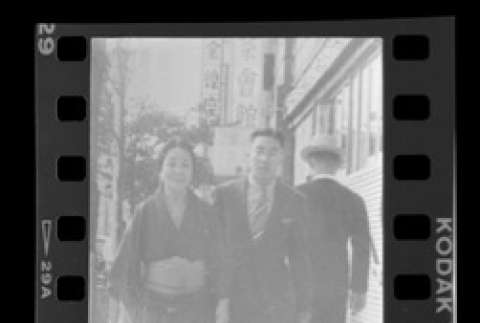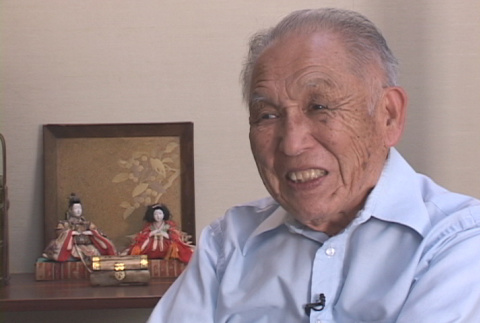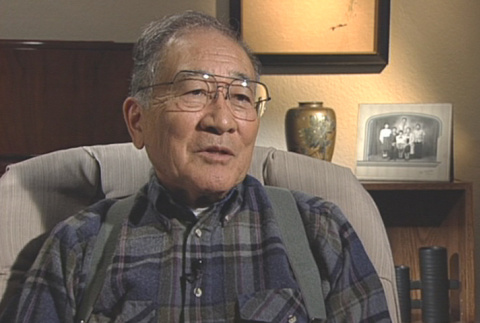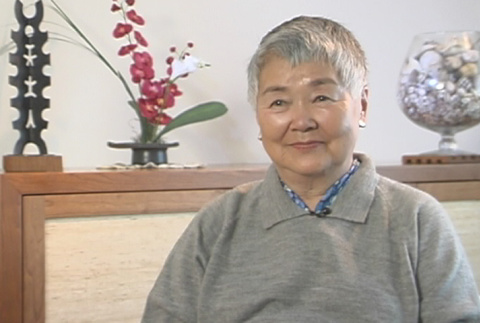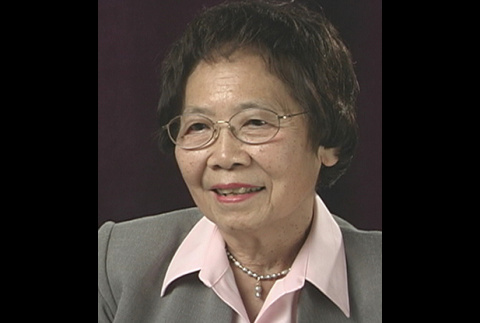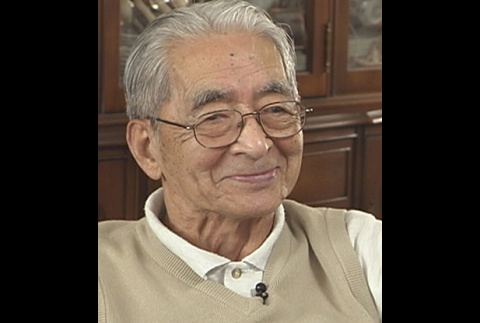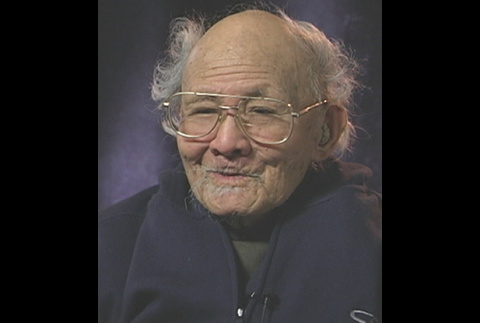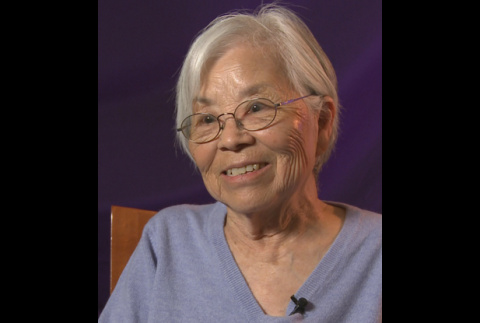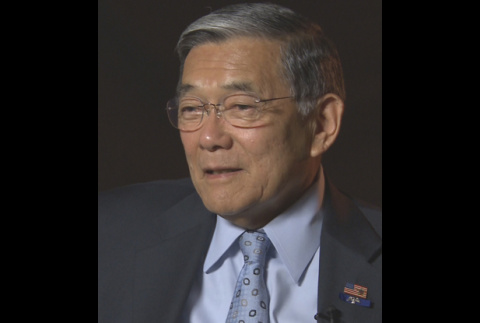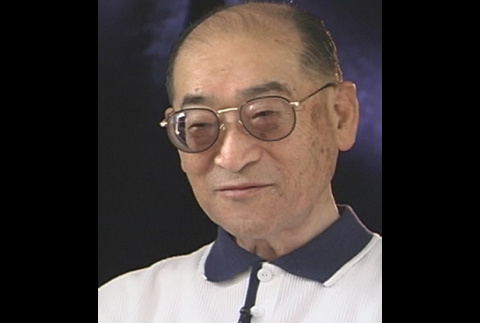4981 items
4981 items
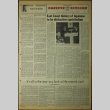
doc
Pacific Citizen, Vol. 71, No. 25 (December 18, 1970) (ddr-pc-42-50)
Selected article titles: "East Coast history of Japanese to be distinctive contribution" (p. 1), "National Constitution Japanese American Citizens League" (p. 2), "JACL chapter presidents" (p. 4), "JACL Bowling Tournament Champions" (p. 7), "The JACL Story: For Better Americans in a Greater America" (p. 9), "Heart Mountain WRA Camp residents sound off before a Dies Committee …

doc
Pacific Citizen, Vol. 70, No. 6 (February 13, 1970) (ddr-pc-42-6)
Selected article titles: "Japan team to bowl in nat'l JACL tourney" (p. 1), "Sansei helped design little computer aboard Apollo 11-first to land on moon" (p. 1), "Gov. Reagan in Support of Title II Repeal" (p. 1), "Japanese and Indian claims methods against U.S. compared" (p. 1), "Chicago steps up convention planning" (p. 1), "Issue call …
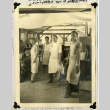
img
Mess hall at Civilian Conservation Corps Camp (ddr-csujad-38-21)
Photographed is a mess hall at Civilian Conservation Corps Camp, Rupert, Idaho. Includes George Nobuo Naohara. The caption reads: The mess hall of C.C.C. Camp [Civilian Conservation Corps Camp] was well furnished with good kitchen appliances and tools. I was raised in Japan and did not know how to operate or use them, but I was …
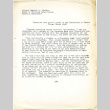
doc
Excerpts from speech given at the University of Hawaii Forum, March 1943 (ddr-csujad-19-3)
Excerpts from speech given at the University of Hawaii Forum, March 1943. The document presents three quoted passages from the speech, one concerning the role of people of "the Japanese race" in serving as liaisons who can provide the most reliable check on the morale, needs, and activities of "the Japanese community"; one comparing the United …
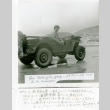
img
Geo testing the jeep (ddr-csujad-38-459)
Photographed is George Nobuo Naohara riding on a jeep. The English caption reads: Geo testing the jeep. It turned out to be usuable [usable]. Translation of the Japanese caption: I tried the jeep which Sasaki-kun found. I thought it could be usable. Asakura-kun used it for his work. He ordered gasoline periodically and added 2 1/4 …
![Letter from Jokichi Yamanaka to Mr. S. Okine, May 17, 1948 [in Japanese] (ddr-csujad-5-256)](https://ddr.densho.org/media/cache/3b/8f/3b8f41a12a75fda699ec7d83ce0e260c.jpg)
doc
Letter from Jokichi Yamanaka to Mr. S. Okine, May 17, 1948 [in Japanese] (ddr-csujad-5-256)
A letter from Jokichi Yamanaka in Hiroshima, Japan to his brother-in-law, Seiichi Okine. He thanks the Okines for the letter, the tobacco, and ajinomoto brought by the Nakano family. He also thanks Hatsuno Hotty Befu for the gifts. He informs that his daughter, Fumiko, has left for the U.S., but it is not clear when he …
![Letter from Miyuki [Matsuura] to Mr. and Mrs. S. Okine, July 12, 1952 [in Japanese] (ddr-csujad-5-275)](https://ddr.densho.org/media/cache/65/9d/659d48db5e0242a727ca612872df287a.jpg)
doc
Letter from Miyuki [Matsuura] to Mr. and Mrs. S. Okine, July 12, 1952 [in Japanese] (ddr-csujad-5-275)
A letter from Miyuki Matsuura to her uncle and aunt, Seiichi and Tomeyo Okine. She updates on her crops, picking strawberries, and her fears that the recent cold weather would delay the growth of garlic. She also updates on Mr. Freitas's wedding gift that Seiichi Okine asked her to prepare. She bought a large plate and …

doc
Minidoka Irrigator Vol. I No. 21 (November 25, 1942) (ddr-densho-119-154)
Selected article titles: "Poston Reign of Terror is Short-Lived" (p. 1), "Sprague Commends Colonists for Aiding in Harvest Work" (p. 1), "Forms Ready for Jobless Benefits" (p. 1), "No Coal Given Blocks Which Fail to Help" (p. 1), "Hunt Will Join in Celebration of Thanksgiving" (p. 1), "Editorial: Nisei, Your Move Next" (p. 2), "OWI's Japanese …
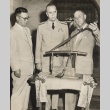
img
Stuart S. Murray and two men looking at samurai swords (ddr-njpa-2-216)
Caption on reverse: "HISTORIC SWORD: A Japanese samurai sword which was given to the Rev. Samuel Chenery Damon by Manjiro Nakahama about a century ago was presented to Rear Adm. S. S. Murray, commandant of the 14th naval district, at a brief ceremony yesterday afternoon at the Honolulu Academy of Arts by Samuel R. Damon, great …
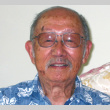
av
Tetsuo "Ted" Hasegawa Interview (ddr-densho-400-4)
Ted Hasegawa was born on January 16, 1921, in Sacramento, California, and educated in Japan. When he returned to Torrance, California, where his parents farmed, he started kindergarten at the age of 11. After high school, he took automotive classes at a trade school in Los Angeles. Hasegawa witnessed the mass eviction of Japanese residents from …
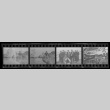
img
Negative strip (ddr-densho-356-32)
Negative strip of four images of Richard Tsukada's trip to Japan c. 1939. Print copies of the negatives visible at ddr-densho-356-24, ddr-densho-356-29, and ddr-densho-356-21. Images 1 & 2: Negatives of Richard Tsukada sitting a on a rock above water. Image 3: Negative of a group of 12 people on the deck of the …
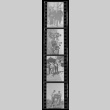
img
Negative strip (ddr-densho-356-30)
Negative strip of four images of Richard Tsukada's trip to Japan c. 1939. Print copies of the negatives visible at ddr-densho-356-20, ddr-densho-356-23, ddr-densho-356-26, and ddr-densho-356-25. Image 1: Photograph of Richard Tsukada and his mother Hana Tsukada (Uyeda) walking in Ginza. Image 2: Photograph of Richard Tsukada (second from left), Hana Tsukada (Uyeda) …
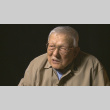
vh
Kiwamu "Kiyo" Tsuchida Interview (ddr-densho-1000-405)
Nisei male. Born February 2, 1923, in Auburn, Washington. Grew up in Auburn, where father worked for the Great Northern Railroad and the family also ran a farm. During World War II, removed to the Pinedale Assembly Center and Tule Lake concentration camp, Oregon. Family then transferred to the Topaz concentration camp, Utah. Kiwamu left camp …
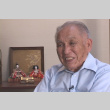
vh
James Yamazaki Interview (ddr-densho-1000-175)
Nisei male. Born July 6, 1916. Grew up in the Los Angeles area, where father was a Buddhist minister. Attended medical school before World War II. During the war, served in the U.S. Army as a doctor with the 106th Infantry Division in Europe. Captured during the Battle of the Bulge and was held in several …
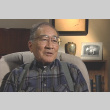
vh
Harvey Watanabe Interview (ddr-densho-1000-102)
Nisei male. Born February 7, 1919, in Exeter, California. Spent prewar childhood in Visalia, California. Drafted prior to World War II. Served in an activated National Guard unit at Fort Lewis, Washington. When World War II broke out, he and all the other Nisei servicemen at Fort Lewis were sent inland. About twenty, Harvey included, went …
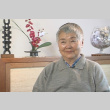
vh
Shigeko Sese Uno Interview (ddr-densho-1000-98)
Nisei female born April 6, 1915, in Seattle, Washington's International District. At an early age became active in the Japanese Baptist Church. Parents owned and operated a dairy plant called White River Dairy. Was a student at the Baptist Missionary Training School in Chicago, Illinois. Took a group of young women on an eye-opening trip to …
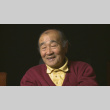
vh
Charles Oihe Hamasaki Interview (ddr-densho-1000-274)
Nisei male. Born October 7, 1922, in Japan, while parents were visiting family. Came to the U.S. at three months old, and grew up in Terminal Island, California. After the bombing of Pearl Harbor, picked up along with Issei father and taken to Fort Lincoln (Bismarck), North Dakota. Transferred from Fort Lincoln to the Santa Anita …

img
Soldier and mother (ddr-densho-151-45)
Original WRA caption: Florin, Sacramento County, California. A soldier and his mother in a strawberry field. The soldier, age 23, volunteered July 10, 1941, and is stationed at Camp Leonard Wood, Missouri. He was furloughed to help his mother and family prepare for their evacuation. He is youngest of six years children, two of them volunteers …

Narrator May Y. Namba
Nisei female. Born May 12, 1922, in Seattle, Washington. Spent brief time in Japan as a young child, then returned to Seattle. Worked as a clerk in the Seattle School District until the onset of World War II, then was forced to resign under pressure from parent groups. Removed with family to Puyallup Assembly Center, Washington, …

Narrator Sam Ogo
Nisei male. Born September 1, 1919, in Millwood, Washington, where father worked for SP&S railroad. After serious injury, father quit the railroad and moved family to Spokane, Washington, where they operated numerous hotels. Sent to Japan with siblings in 1933 to attend school. Was only one in the family to return to the U.S. three years …

Narrator Larry "Shorty" Kazumura
Nisei male. Born November 7, 1920, in Mountain View, Hawaii. Grew up in Hawaii, where parents ran a sugar cane plantation. Was working hauling lumber when Japan attacked Pearl Harbor on December 7, 1941. Was not dismissed from work like other Japanese Americans, and was required to clean up the aftermath of the bombing. Volunteered for …

Narrator Nancy Sawada Miyagishima
Sansei female. Born September 17, 1930, in Sacramento, California. Spent childhood in Sacramento where mother and stepfather worked on strawberry fields. Sent to live with relatives in Fort Lupton, Colorado, after mother passed away in March 1941. Unable to return to West Coast after the bombing of Pearl Harbor on December 7, 1941. Extended family moved …

Narrator Norman Mineta
Nisei male. Born November 12, 1931, in San Jose, California. During World War II, removed to Heart Mountain concentration camp, Wyoming. Graduated from the University of California at Berkeley, and served in the military as an intelligence officer in Japan and Korea. Served on the San Jose City Council from 1967 to 1971, and as mayor …

Narrator June M. Hoshida Honma
Nisei female. Born June 23, 1936, in Hilo, Hawaii. After Japan bombed Pearl Harbor on December 7, 1941, father was picked up by the FBI and detained at Sand Island internment camp, Hawaii. The rest of the family was removed to the Jerome concentration camp, Arkansas, to be reunited with him. After Jerome closed, transferred to …

Narrator Spady Koyama
Nisei male. Born June 4, 1917, in Ferry County, Washington. Sent to Japan at age five following father's death, returning to Spokane, Washington, in 1927. Enlisted in the U.S. Army in January 1942. Served with the Military Intelligence Service (MIS) in the Pacific Ocean theater during World War II where he was seriously injured during a …
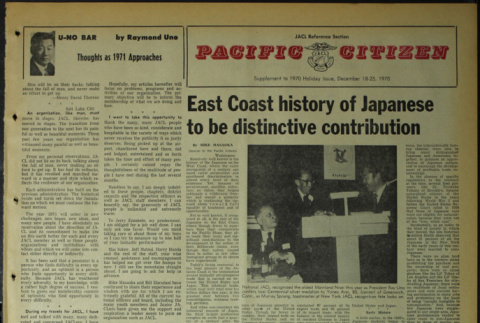
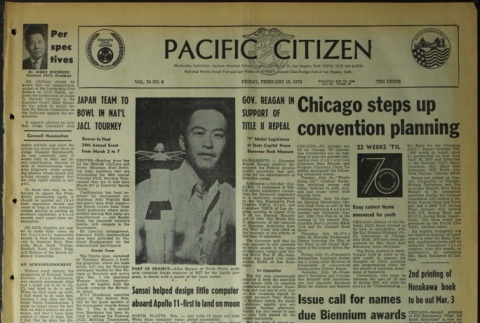

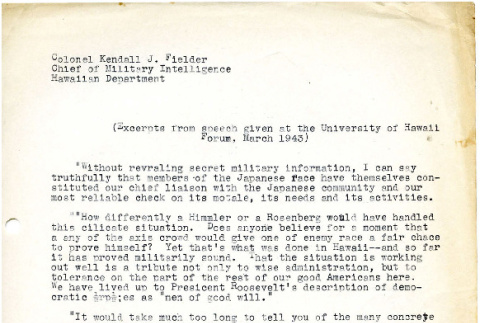
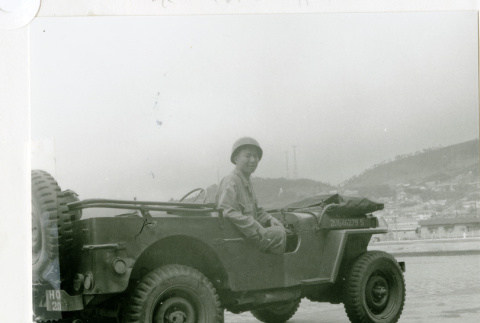
![Letter from Jokichi Yamanaka to Mr. S. Okine, May 17, 1948 [in Japanese] (ddr-csujad-5-256)](https://ddr.densho.org/media/cache/e3/65/e36512fb049055391e589a2c3c0a87cc.jpg)
![Letter from Miyuki [Matsuura] to Mr. and Mrs. S. Okine, July 12, 1952 [in Japanese] (ddr-csujad-5-275)](https://ddr.densho.org/media/cache/73/e8/73e8f4a46d3eba6d0e383846d9b43d3f.jpg)

